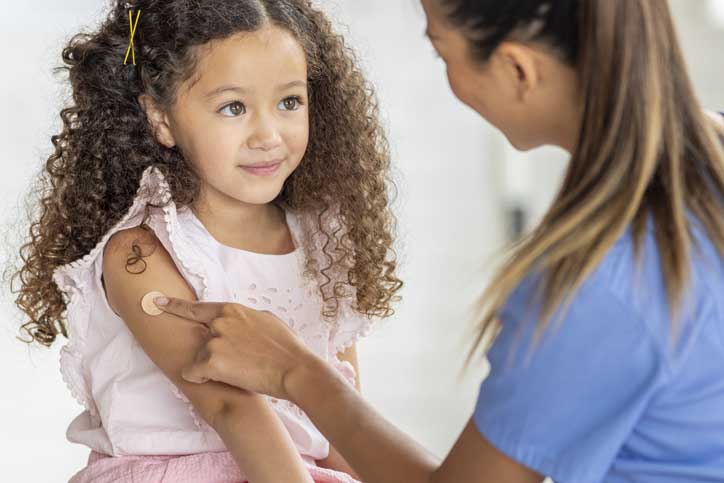
Total Solar Eclipse 2024
How to watch safely
Safety while driving
Risks
Information for institutions
Information for child care facilities and parents with young children
Large gatherings
Learn more
On April 8, 2024, the EOHU region will be in the path of a solar eclipse. The City of Cornwall, Akwesasne and parts of Stormont, Dundas and Glengarry will be in the path of totality and will be able to see the moon completely cover the sun. The rest of the EOHU area will experience a partial eclipse. To see if your area is in the path of totality, click here.
The moon will begin to cover the sun, and daylight will begin to dim around 2 p.m. and reach night-time darkness for approximately 2 minutes and 15 seconds at 3:25 p.m., as the moon covers the sun fully. The full eclipse will last in the area for approximately 2 hours and 25 minutes, and end around 4:30 p.m.
The amount of the sun covered by the moon, and the timings of the beginning and peak of the solar eclipse vary by region. See when eclipse will begin and the timing of the peak of the eclipse in your area here.
Looking directly at the sun during an eclipse without proper eye protection can cause serious eye damage, such as retinal burns, blurred vision and permanent or temporary vision loss. Eye protection that meets the ISO 12312-2:2015 safety standard is needed to protect your eyes from serious, and sometimes permanent damage. Even if you are in an area where there will be only a partial eclipse, and are not in the path of totality, you must take precautions to protect your eyes and prevent damage.
How to watch safely
If you will be watching the eclipse, take the following precautions to protect your eyes:
- Only look at the eclipse while wearing eye protection from a reputable source that meets the ISO 12312-2:2015 safety standard and has the manufacturer’s name and date of production on them.
- Do not use a viewer if it has scratched or wrinkled lenses.
- Ensure that eclipse glasses fully cover your field of vision.
- Put on glasses when looking away from the sun, then look at the eclipse. Look away from the sun before taking glasses off.
- Do not use regular sunglasses, cameras, phones, binoculars, or telescopes to watch the eclipse, as they do not provide adequate protection.
- Do not use DVDs, potato chip bags, or other homemade filters.
- If you will be working outdoors during the eclipse, make sure you are wearing protective eyewear for the duration of the eclipse.
- Alternatively, watch the eclipse indirectly through an eclipse box, pinhole projector, or livestream. Livestreams of the eclipse are a safe way to view the eclipse without the risk of injury from misusing equipment.
- Supervise children to ensure they do not look at the eclipse without proper eye protection.
Safety while driving
If you will be driving during the eclipse:
- Do not look at the eclipse while driving.
- Make sure to have your headlights on.
- Do not take pictures or video record while you are driving.
- Do not park on or pull over to the shoulder of highways to watch the eclipse.
- Watch for pedestrians.
Risks
While solar eclipses are fascinating events, they can be dangerous. Damage to your eyes can occur even when the sun is partially covered by the eclipse. Symptoms can take 12 to 48 hours to appear. Your retinas do not have pain receptors, so you may not know that damage is happening until symptoms appear and it is too late.
If you are experiencing blurred vision, or loss of vision after viewing the eclipse, please contact your health care provider or Health811. If you are experiencing blindness after viewing the eclipse (immediate or delayed), seek emergency care immediately.
Information for institutions
Try to avoid transferring patients during the eclipse if possible. If transfers must occur during the eclipse, ensure that staff, patients, and clients are taking precautions to protect their eyes.
Information for child care facilities and parents with young children
Young children should be monitored closely during the eclipse. Eye damage from looking at the sun can occur even while the sun is partially blocked. Childcare facilities should keep young children indoors during the eclipse, with windows and curtains shut, to prevent accidental eye injury from looking at the eclipse without proper safety equipment.
Whenever possible, it would be best if parents did not collect their children from childcare facilities during the eclipse. However, if not possible, parents should take precautions to protect their children’s eyes.
Large gatherings
Special events such as the eclipse can bring large crowds to the region, and the risk of illnesses such as gastrointestinal viruses and respiratory viruses can increase. If you are sick or feeling unwell or are at higher risk of severe illness, please wear a mask when in crowded areas.
Learn more
Government of Canada – Guide to Solar Eclipses
Government of Canada - Build your own projector to watch solar eclipses safely
Canadian Space Agency – Total solar eclipse of April 8, 2024
McMaster University Planetarium– Total Solar Eclipse
Queen’s University – 2024 Total Solar Eclipse
NASA Livestream
University of Toronto Livestream
Total Solar Eclipse Printable Handout

